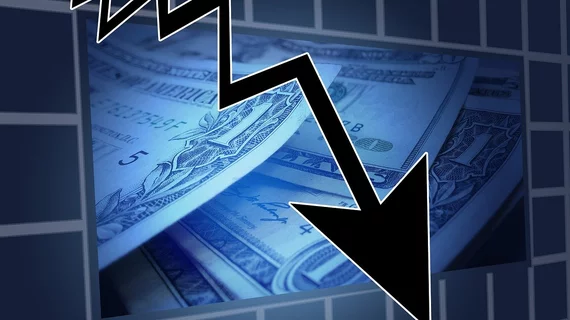Industry payments to radiologists dropped precipitously post COVID, with an uneven recovery since
Industry payments to radiologists dropped precipitously when the COVID-19 pandemic shut down travel and conferences, with an uneven recovery since then, according to a new analysis.
The total number of disbursements to the specialty dropped 50% from 2019-2020. Gifts (such as food and entertainment) and speaker fees took the biggest hits, as the total number of payments fell 54% and 63% respectively, researchers detailed Thursday in the Journal of the American College of Radiology.
However, the average payment amount to radiologists surged 177% between 2019 and 2020. Royalty/ownership fees, in particular, climbed considerably, up 345% in value at the same time—findings with “broad significance” for the specialty, the authors noted.
“This study revealed that the COVID-19 pandemic significantly altered the number, value and types of industry payments to radiologists,” corresponding author Ajay Malhotra, MD, with the Yale School of Medicine, and colleagues wrote May 4. “These changes persisted a year into the pandemic, suggesting possible lasting effects on physician-industry relationships."
“If high-value industry payments largely reflect gratuitous interactions with industry (e.g., gifts), this would raise concerns about quid pro quo relationships and conflicts of interests that lead to negative outcomes for healthcare spending and resource utilization,” they added later. “By contrast, if the transfers predominantly reflect innovation or market-rate payments for strategic consulting, this would raise less concern and could arguably drive advancements in imaging technologies and patient care.”
For the study, researchers tapped CMS’ Open Payments Database, targeting the period spanning January 2016 to December 2021. Industry fees were divided into six categories: consulting work, education, gifts, research, speaker fees and royalties/ownership (such as licensing or current/prospective proprietorship in an industry entity).
Nearly 30,700 radiologists received these payments between 2016-2021. More than three quarters of them were men and 70% went to diagnostic radiologists. Female physicians collected 10% of the total dollar amount, despite accounting for 20% of individuals in the head count. Radiologists received a median payment value of $28, compared to $16 across all physician types.
The total number of industry payments to members of the specialty swelled 9% between 2016-2019, up to over 117,000. But the pandemic more than halved that number, dipping to 58,000 in 2020, with a 34% rebound in 2021 (78,000). Malhotra and co-authors also reported a 32% drop in the total number of radiologists collecting industry payments when the pandemic arrived, falling from 15,000 down to about 10,000 in 2020. There was a slight rebound by 2021, with nearly 12,000 radiologists earning payments, up 16% compared to the previous year.
“Interestingly,” the authors reported, despite decreases that occurred in 2020, average payment amounts to rads nearly tripled, rising from $581 to $1,607 from 2019-2020. And the total pot of funds received increased 37% year-over-year, reaching $93.6 million in 2020. Such patterns persisted across different radiological subspecialties.
Malhotra et al. said the swing was likely attributable to changes in different payment categories. Radiologists received nearly $12.7 million from 173 royalty/ownership outlays in 2019. But that number more than quadrupled the first year of the pandemic, up to $56.3 million from 186 separate payments. Members of the specialty additionally saw the number of checks cut for consulting fees climb more than 19% in 2020, while the pot of payouts for this work was up 3%, to $20.4 million.
“The increase in these payment types (as radiologists were paid to share their expertise during the public health crisis) may explain the overall growth in payment value,” the authors noted.
As conferences dried up in 2020, so too did the connected perks. Radiologists received about $4.2 million in gifts (on about 90,000 payments) and $21.2 million in speakers fees (19,000) payments in 2019. But money spent on gifts fell 61% (and total number of payments 54%) to more than $1.6 million in 2020. Speaker fees, meanwhile, were down more than 59% (total number of payments down 63%), reaching $8.6 million the first year of COVID. However, gifts saw a significant rebound from 2020-2021, including a 62% in value ($2.7 million) and 45% uptick in number of payments (59,000-plus). Speaker fees were more stagnant, with the total value up 2% in 2021 and payment count increasing 7%.
The increase in total spending on industry did not appear to be tied to innovation and technological progress, the authors wrote. From 2019 to 2020, payments for research increased by 37% for both total tally and value and further decreased by 2021. And the number of radiologists who received payments dropped 44% between 2020-2021. But the median value of total research payments to each radiologist swelled 127%, “suggesting a greater concentration of industry research funding to a smaller number of physicians.”
Read more from the JACR below.

